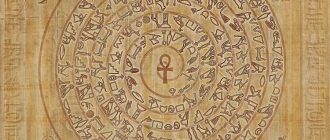Want to know what Egyptian soot is? Read on to find out the sources that expel Egyptian soot…
Soot is the black powder that is left behind after the burning of a wooden flame torch, an oil lamp or perhaps a candle in a large quantity. Soot is often seen coating the walls as well as ceilings of rooms in which it was utilized. These are basically the remnants of combustion and they leave marks specifically in the direction where the device was ignited and left burning.
Soot in Egyptian Pyramids
Traces of Egyptian soot remnants can be found in the burial chambers of the walls in the Red Pyramid of Dahschur. This chamber is built on ground-level by the father of Khufu called Snofru. Khufu is well known for his creation of the Great Pyramid. There is an abundant amount of soot in this chamber and is at least a few millimeters in thickness and can be found throughout the ceiling and walls of his burial chamber in Egypt. One of the earliest mentions of Egyptian soot dates back to the year 1638 and has been mentioned in a book on the Great Pyramid written by John Greaves.
Mystery of Soot Deposits in the Chambers
Most of the chambers and passageways constructed inside the pyramid in Egypt opened out in ditches and had quite a few layers of floorings and large wall blocks. These were constructed outside and then lowered into the chambers after they were decorated and finished. This entire construction took place during the daytime and most of the work was done with the sunlight so it is actually a mystery to find large deposits of Egyptian soot in the pyramids.
Further, it is interesting to note that the Egyptian lamp was a very simple piece of lighting equipment. It basically utilized a small wick which was left floating in oil. And technically it should not give off a lot of soot on ignition and continuous burning. This oil lamp is often depicted in the scenery that decorates the pyramid walls.
The Egyptian lamps were actually standing in limestone cases and were often covered on the top to illuminate the rooms. This meant that a large amount of soot would not be expelled into the environment thereby leaving minimum carbon deposits on the walls and ceiling. This can only allow us to conclude that there is an external source that passed through the Egyptian remains of the Pyramids much later than the Dynastic era and during the discovery and exploration have left behind the remnants of this carbon form.
The main reason why soot in Egyptian pyramids was frequently analyzed is to figure out if there is an alternative lighting source utilized by Egyptians like flashlights which allowed them to navigate the dark chambers of the pyramids.
However, this analysis is faulty because Egypt was blessed with a lot of sunshine and long days in the sun. With the elements of sun worship it was known that the Egyptians would work throughout the day and retire at sunset. Their beautiful craft and technology allowed them to build the pyramids and other structures in pieces and then assemble them from the ground up. This would essentially allow them to work without artificial lighting.





